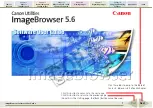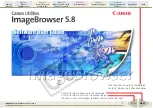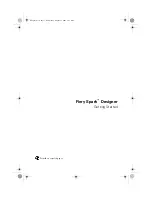
Restore Options
Chapter 4: Restoring Microsoft SQL Server Databases 49
Files and FileGroups restore
Restores selected files and FileGroups. You can restore files and FileGroups
from either a Files-and-FileGroups backup, Partial backup or Database
backup. When restoring files or FileGroups, you must first restore from a Full
backup session, then optionally from a differential session, followed by all of
the Transaction log backup sessions performed after the Full or Differential
backup. When you restore a file or FileGroup, you must apply the
Transaction log to the database files immediately after the last file or
FileGroup operation.
Note:
A Files and FileGroups restore must be applied to the original
database or to a restored copy of the original database. Otherwise, the logs
will not be applicable.
Partial restore
A partial restore always restores the primary FileGroup and any other
FileGroups you specify as a new database. The result is a subset of the
database. FileGroups that are not restored are marked as offline and are not
accessible.
Note:
A database that is created using a Partial Restore may not be eligible
for a Database backup, due to the unrestored FileGroups being offline. To
resolve this condition, either restore the remaining FileGroups to the
partially-restored database, or remove them from the database structure
using the Microsoft SQL Server Enterprise Manager or Management Studio.
Torn Page Repair
Restores only the pages of data on disk which have been marked as
damaged. SQL Server 2005 has the ability to isolate the damaged parts of a
database while leaving the rest intact. When this happens with a Full
Recovery Model database, the database may be eligible for a Torn Page
Repair, which is much faster than a Database restore. The dependencies for
this restore are similar to a Files and FileGroups restore.
There are both Online and Offline versions of this operation. In an Online
Torn Page Repair, the database remains online the entire time, and
undamaged tables are still accessible. In an Offline Torn Page Repair, the
database should be taken offline using a Log Tail backup before the restore
is performed. Online Repair requires the Enterprise Edition of SQL Server.
Note:
Torn Page Repair restore must be applied to the original database, or
to a restored copy of the original database. Otherwise, the data and logs will
not be applicable.
Important!
When using Automatic Selection, you may be unable to restore a
database to a different location on a disk (for example, to a different drive letter
or directory path, or with a different file name) using backups from previous
versions of CA ARCserve Backup or BrightStor
®
Enterprise Backup. For more
information about restoring to a different location, see Restore to Alternative
Disk Locations Using Automatic Selection.
















































